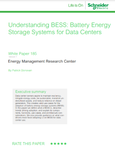When I look back over my 25 years of building and operating data centers, there has always been a legacy of some sort to deal with, whether it’s equipment, buildings, customers, software or systems.
But our new facility is truly legacy-free; what we have here is a blank sheet of paper. I thought it would be useful to share my views on the ways in which a lack of legacy overhead can improve what we offer the market.
A legacy-free facility is a golden opportunity to design a future-proof data center, delivering the very best the market can currently offer to customers. This applies across the board. We can address a broader market more easily. We can maximize efficiency, and we can build with our neighbors, our environment, and our latest industry certifications in mind.
Flexible Power & Cooling
With the rise of AI, power increasingly defines our customer proposition, and this can be a constraint with legacy facilities. For example, we have designed our new BRU01 facility around a centralized medium-voltage UPS block. This makes it relatively easy to redistribute power around the data halls - whether a customer wants 5kW or 80kW per rack (or more) our electrical design can handle it. The additional flexibility is supported via the cooling set-up. We can decide per data hall if we want to deploy an air-based solution or liquid (rear-door, direct-to-chip, or full immersive). What this means for the customer is that if they say “I want 10MW with 75kW a rack” you don’t have to think, you just say “yes, no problem.”
But it is still early days for AI in most organizations, and it is important that our design doesn’t affect overall retail/enterprise appeal. At the same time as high density, we can still serve up 500kW with 5kW a rack for customers with more traditional requirements. That’s what I mean by future-proof design and broadening the market.
Advanced Applications
Apart from being ready to pivot from CPUs to GPUs, perhaps the biggest difference between greenfield and legacy is in the application landscape.
Legacy facilities were built with the applications of the day supporting them, and migrating from these to a new application landscape is complicated and expensive.
Building new data centers without this legacy enables us to deploy state-of-the-art software that provides our customers with advanced insights and also gives our operations team the latest AI-based tools to optimize the performance of the facility. It potentially means we can automate the monitoring, reporting, and auditing needed for customer ESG purposes, helping them conform more easily to the requirements of EU, EED, and CSRD regulations.
A brand new facility can be smart inside and out and the customer portal can use software with a beautiful graphical user interface that offers levels of data and automation that legacy-heavy facilities can only dream of.
Sustainable Standards
Eliminating carbon in the face of the climate crisis is an overriding concern for the industry.
One area where a new build can be at a disadvantage is in the embodied carbon impact of the build itself when compared to a converted build. However, this challenge can be addressed directly and mitigated. Building to the BREEAM standard is the key to this, including investment in reduced carbon concrete and recycled steel, the most carbon-intensive construction materials.
We should also bear in mind that, particularly in the era of AI, operational carbon is potentially far higher than construction carbon.
New builds can target optimal HVAC efficiency levels and low-carbon backup solutions as well as structuring renewable power agreements to maximize 247 carbon-free energy. And we can also design for circularity, building in options to re-use waste heat – something which liquid cooling is very well suited for – and enhancing circularity for equipment.
Compliant Processes
Another clear benefit of building a facility operating model from scratch is the opportunity to fully align your process model with the implemented applications. This is a particular area of focus for me, and we are developing our processes against the ISO9001, ISO27001, ISO14001, ISO50001, and ISO45001 standards, as well as the very latest security certifications. Designing with this in mind improves our environmental benchmarks and enhances efficiency and security, allowing us to streamline our processes and be ready to offer the compliance customers need from Day One.







